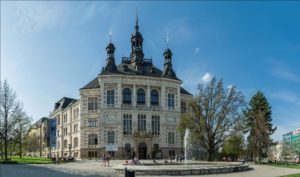Regional museums
Brno Region Museum
Porta coeli 1001, 666 02 Pre-monastery
www.muzeumbrnenska.cz
The Museum was established in the 1960s by merging several separate institutions. Today it consists of: the Podhorácké Museum in Předklášteří (since 1929); the Museum in Šlapanice (since 1934); the memorial Mound of Peace commemorating the Battle of the Three Emperors led by Napoleon near Austerlitz on 2nd December 1805 (since 1914/1923 designed by architect Josef Fanta); the Museum in Ivančice (since 1894 with a collection of works by Alfons Mucha); the Monument of Literature in Moravia (since 2005) in the Benedictine Monastery in Rajhrad; and the Villa Löw-Beer in Brno (since 2015), which belonged to Greta Tugendhat’s parents.
Virtual tours: http://muzeumbrnenska.pano3d.cz/
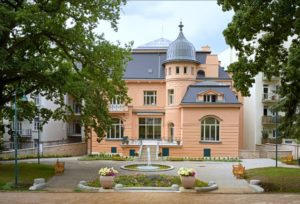
Central Bohemian Museum in Roztoky u Prahy
Zámek 1
252 63 Roztoky
www.muzeum-roztoky.cz
The Museum’s expositions are held in the castle building and on the grounds of nearby Brauner’s Mill. The castle expositions emphasize the period when the domain was in possession of the Liechtenstein family (1623-1803), and the phenomenon of villa summer resorts by Prague in the second half of the 19th century. Zdenka Braunerová Studio (1858-1934) features her personality and work as a painter, graphic artist, and book artist. The upcoming exhibition ‘In the Footsteps of Ages’ will show archaeological collections and offer a walk through prehistory added by holographic projections, computer perspectives, and videomapping.
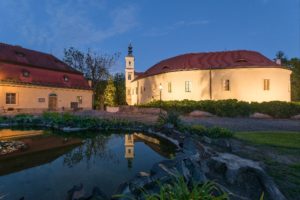
East Bohemian Museum in Pardubice
Zámek 2, 530 02 Pardubice
www.vcm.cz
The origin of the Museum goes back to 1880. The full development The origin of the Museum goes back to 1880. The full development occurred after 1920, when the museum moved to a Renaissance castle built by the Pernštejn family. At present, it is possible to visit knights’ halls with mural paintings, eight expositions and exhibitions. Among the most valuable fonds is 20th-centrury Czech studio glass, historical weapons, postcards and toys. The numismatic collection includes a unique find – some hundred Czech denar coins from the last third of the 10th century.
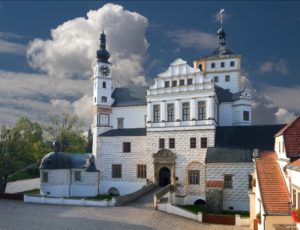
Jindřichův Hradec Museum
Balbínovo nám. 19/I, 377 01 Jindřichův Hradec
www.mjh.cz
The Museum was founded in 1882. It operates unique former monastic complexes of Jesuits and minorities in Jindřichův Hradec. The Jindřichův Hradec Museum houses over 70,000 items in its collection, which comprises over 100,000 collection objects of extraordinary historical, artistic and documentary value. The most famous exhibit of the Museum is Krýza’s Nativity Scene. This movable Christmas crib containing almost 1,400 figures has been part of the collections since 1935. The collection that is unique is that of Lada sewing machines. The expositions of textile artist and designer Marie Hoppe-Teinitzer, and opera singer Ema Destinová are of international importance.
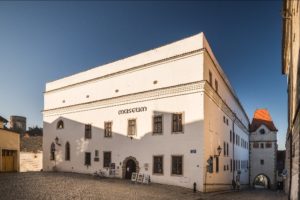
Museum of Beskydy in Frýdek-Místek
Hluboká 66, 738 01 Frýdek-Místek
www.muzeumbeskyd.com
The Museum Beskyd Frýdek-Místek is a contribution organization established by the Moravian-Silesian Region. Its headquarters and exhibitions are situated in Frýdek Chateau. It is open all year round and offers visitors two permanent expositions, short-term exhibitions, a study library, educational activities (Senior Gymnasium, lessons for schools), and a rich cultural program in the form of concerts, theater performances, festivals, and events for families with children. There are two permanent expositions in the museum. One of them is a guided tour route through the chateau and the second is dedicated to the history and ethnography of the Beskydy region. The museum also administrates Hukvaldy Castle.
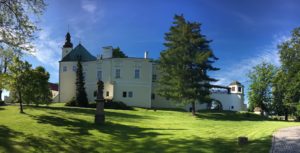
Museum of Eastern Bohemia in Hradec Králové
Eliščino nábřeží 465, 500 01 Hradec Králové 1
www.muzeumhk.cz
Situated on the bank of the Labe River (Elbe) in Hradec Králové and created with loving care dances the most attractive building designed by outstanding architect Jan Kotěra. The institution of the Museum founded no later but in 1880 is permanently developing and collecting East Bohemia’s memories with professional interest and youthful enthusiasm. Among natural sciences, historical and archaeological conserved memoirs are the War of 1866 Museum at Chlum, the memento of a conflict that belongs to the bitterest 19th century battles in Europe. Defeated Austria lost its position in the region, and Prussia embarked on the journey to form a united state of Germans.
On-line museum: https://muzeumhk.cz/program/vystavy-online.html
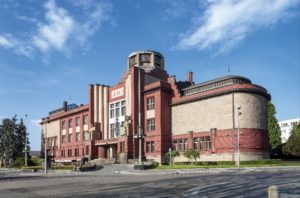
Museum of T. G. M. in Rakovník
Vysoká 95, 269 01 Rakovník
www.muzeumtgm.cz
The Museum’s core collection fond covers Central Bohemia and is on display in Rakovník. Other expositions in Lány are dedicated to the first Czechoslovak president T. G. Masaryk and his daughter Alice G. Masaryk. The Museum in Nové Strašecí boasts an interesting Celtic exposition. The Joachim Barrand Memorial in Skryje exhibits trilobites and features that important paleontologist. The Jesenice Museum shows the least populated area in the Central Bohemian Region in the former Sudetenland. The hall in Nezabudice is devoted to the personality of Jaroslav Franěk.

Museum of Těšín region
Masarykovy sady 103/19, 737 01 Český Těšín
www.muzeumct.cz
The Museum of the Těšín Region documents the rich history, natural science and ethnography of the Czech part of Těšín Silesia. The Museum houses the Silesian Museum Library and the Study Room, the Club of the Museum of the Těšín Region, Chotěbuz-Podobora Archeopark, Kotul’s Wooden House in Havířov, the Memorial to the Life Tragedy in Havířov-Životice and the newly built Trojmezí Museum in Jablunkov. The museum publishes regularly a peer-reviewed non-impact magazine Těšínsko, a number of publications, organizes accompanying programs and public events.
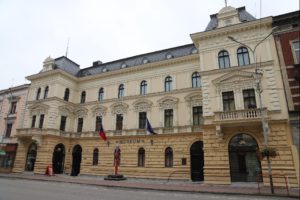
Museum of the Vysočina in Třebíč
Zámek 1, 674 01 Třebíč
www.zamek-trebic.cz
The Museum established in 1898 displays the history and nature of the Třebíč region. It is famous for collections of pipes, Moravian moldavites, minerals, and rocks, as well as the collection of nativity scenes. It annually stages events such as The Czech Republic Trade Fair of Museums or Pipe Smoking in Třebíč. The former Monastery and Basilica of St. Procopius and Jewish Quarter have been inscribed on UNESCO’s World Heritage List.

Museum of the Wallachian Region
Horní náměstí 2, 775 01 Vsetín
www.muzeumvalassko.cz
The Museum profiles itself as a multidisciplinary organization in the fields of social sciences, natural sciences and technology. It educates visitors on the basis of a multidisciplinary approach through exhibitions, expositions, events and publishing activities, and educates children and youth in the environmental field. It holds a unique collection of furniture made of bent beech wood, tapestries and lighting glass; the collection of old prints is supraregionally valuable. The Museum operates the observatory that popularizes astronomy and other natural sciences.
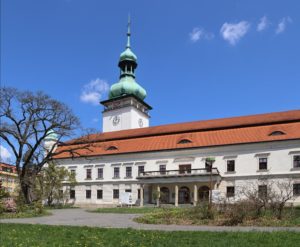
North Bohemian Museum in Liberec
Masarykova 11, 460 01 Liberec 1
www.muzeumlb.cz
The North Bohemian Museum in Liberec is a successor to the Museum of Applied Arts established in 1873. Its collection was built up with respect to the local glass and textile manufacture tradition in the European context. The core collection containing over 2,500 art objects was donated by textile industrialist and patron Heinrich von Liebieg in 1904. Regional museums closed down after 1945 and were incorporated as part of the North Bohemian Museum, therefore the Museum would begin to expand and include natural science and national history and geography fields.
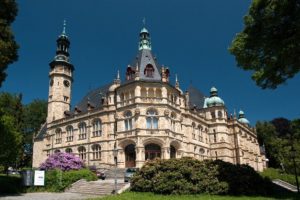
Postal Museum
Nové Mlýny 2, 110 00 Praha
www.postovnimuzeum.cz
The Postal Museum was the first museum founded in the newly established state, Czechoslovakia. It was on 18 December 1918 when the first Czechoslovak postage stamps – the famous Hradčany Castle designed by Alphons Mucha were issued. In addition to an extensive collection of Czechoslovak, Czech and foreign stamps it boasts a collection of objects from the history of the postal administration (especially horse-drawn vehicles, letter boxes, signboards, uniforms, and means of telecommunication) which is on view in the Cistercian Monastery in Vyšší Brod.

Regional Museum and Gallery in Most
Čsl. armády 1360/35, 434 01 Most
www.muzeummost.cz
The Museum in Most was established in 1888. Since the beginning, it has been assembling historical, scientific and artistic collections with emphasis on the wider Most region, represented by three geomorphological units – the Most Basin, the Ore Mountains and the Bohemian Central Mountains. Historically, the most important part of the collections is the personal estate of Ulrika von Levetzow, Johann Wolfgang von Goethe’s last love, which is on display on the permanent exhibition. Collections of insects, fossils, weapons, textile, arts (including folk) and handicrafts are also extremely rare and rich.
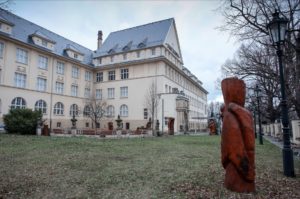
Regional Museum in Český Krumlov
Horní ulice 152
381 01 Český Krumlov
www.muzeumck.cz
The Museum is housed in the building of a former Jesuit seminary. It gives a comprehensive picture of the history of the city and the region through its expositions. Extensive collections from the fields of archeology, art history, ethnography or pharmacy are dominated by a ceramic model of the city – the largest of its kind in the world. The Museum branch – the writer Adalbert Stifter’s Natal Home in Horní Planá opens the door to the world of the historical and literary Bohemian Forest (Šumava). Across the river Vltava lies a castle inscribed on the UNESCO’s World Heritage List.
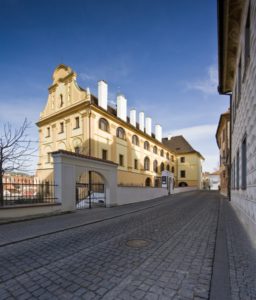
Regional museum and Gallery in Jičín
Valdštejnovo náměstí 1, 506 01 Jičín
www.muzeumhry.cz
Since the end of the nineteenth century, the Regional Museum and Gallery in Jičín has been trying to acquire, preserve and make accessible material evidence about the development of man and the environment in which he lives. Its collections and exhibitions capture the development and history of the entire wider region of Jičín and the southern part of The Bohemian Paradise Geopark. The museum is strongly visitor-oriented and is trying to create such an environment where the visitors can feel comfortable and the absorption of information is not a boring one, , but an unusual and extraordinary experience. The institution is profiled as a “Museum of the Game”, which is understood primarily that the visit to the museum should be like a game for the visitor. A game of discovering information, a game of perception, a game of cognition.
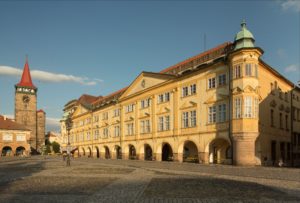
Regional Museum in Jílové by Prague
Masarykovo náměsti 16, 254 01, Jilové u Prahy
www.muzeumjilove.cz
The Museum specializes in one of the most precious materials – gold. It was founded in 1891 by local patriot and researcher Leopold Čihák. The Museum is housed in a historical house called Mince (Coins) built in the mid-14th century, which was the mining authority for Ius Regale Monanorum office until 1420 so administrated mining in the western Posázaví (the lower Sázava basin) and the Střední Povltaví (the central Vltava basin). At present, the Museum has four permanent exhibitions: Gold Mining and Processing, Ora et labora (focusing on the Benedictine Monastery in Ostrov u Davle), History of the Region, and Tramping Posázaví. The museum operates three gold mine galleries: St. Joseph, St. Anthony of Padua and Halíře. They are included in marked walking trails within the educational trail ‘Jílovské zlaté doly’ (Jílové’s Gold Mines), except for the latter.
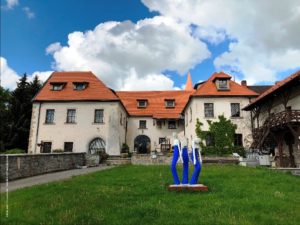
Regional Museum in Litomyšl
Jiráskova 9, 570 01 Litomyšl
www.rml.cz
The Museum of the local history and geography was established in 1891. It is devoted to the history of the region; the permanent exhibition shows medieval archaeological finds in situ, as well as a lot of unique objects. The Museum also operates the famous composer Bedřich Smetana’s Natal House and the Portmoneum that houses the museum of painter Josef Váchal. The Museum is situated in the neighborhood of the Renaissance castle inscribed on UNESCO’s World Heritage List.
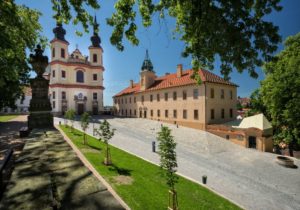
Museum of Moravian Slovakia
Smetanovy sady 179, 686 01 Uherské Hradiště
www.slovackemuzeum.cz
Since the establishment in 1914, the Museum of Moravian Slovakia in Uherské Hradiště has been dedicated to ethnography and archaeology added to by visual arts and history. The scope of research and collecting covers the whole ethnographic area of Slovácko (Moravian Slovakia). As to the field of archaeology and history, the institution pays attention to one important era – Great Moravia, the first stable princedom of West Slavs. The Museum’s branch – the Museum of Folk Distilleries in Vlčnov shows the domestic production of distillates in the Moravian-Slovak borderland. The international cultural trail of St. Cyril and Methodius includes the Great Moravia Empire Monument in Staré Město with a newly built research and presentation center dedicated to these Slavic Missionaries.
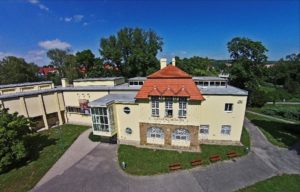
South Moravian Museum in Znojmo
Přemyslovců 129/8, 669 02 Znojmo
www.muzeumznojmo.cz
The Museum is one of the oldest museums in South Moravia. It was established in 1878 and opened the first exhibition in 1889. Today, it houses 400,000 collection items gathered through research and acquisition activities performed by the Museum’s natural history and social science workplaces. The Museum operates six buildings – the Minorite Monastery; the House of Arts; Znojmo Castle with the Rotunda of St. Catherine dating from 11th to 12th century; the monument to the inventor of the lightning rod Prokop Diviš in Přímětice (constructed between 1750 and 1754 before Benjamin Franklin) and the ruins of Castle Cornštejn near Bítov. Among others, the Museum Library has rare old prints from the office of the Premonstratensian Monastery in Louka.On-line collections: https://www.muzeumznojmo.cz/O-muzeu/Sb%C3%ADrky-on-line, and other activities: https://www.muzeumznojmo.cz/Vystavy-Aktivity-online_235
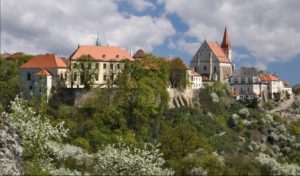
Vysočina Regional Gallery in Jihlava
Komenského 10 and Masarykovo náměstí 24, 586 01 Jihlava
www.ogv.cz
The Vysočina Regional Gallery is housed in two valuable Renaissance burgher houses in the historical center in Jihlava. Its exhibition, collection, research and publishing activities primarily focus on art from the 19th century to the present times. It holds more than 6,000 art objects.http://www.ogv.cz/vyzva_deti_c

West Bohemian Museum in Plzeň
Kopeckého sady 357/2, 301 00 Plzeň 3
www.zcm.cz
Being among the largest museum institutions in the Czech Republic, the West Bohemian Museum in Pilsen was established in 1878. It houses seven permanent exhibitions in four Museum’s buildings in Pilsen; additionally, it has a detached building in Rokycany: the Museum of Dr. Bohuslav Horák. The unique Municipal Armoury in Plzeň is the largest conserved one in the Czech Republic. It was founded by Charles IV, King of Bohemia and Holy Roman Emperor, in 1363.
On-line museum: https://www.zcm.cz/o-muzeu/novinky/muzeum-virtualne
